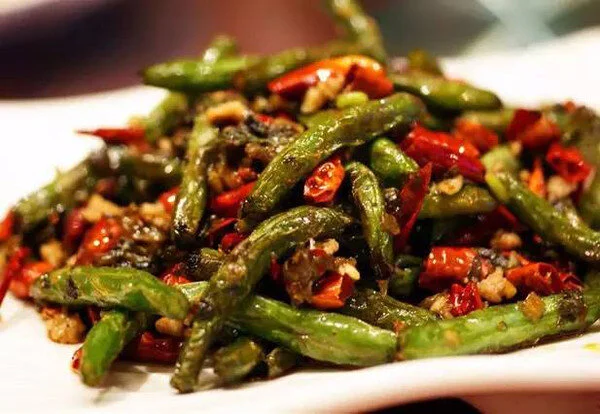For the filling:
3/4 pound ground pork (or your choice of ground meat or seafood)
1/2 cup water
1 egg
1/3 cup soy sauce
1 ⁄2 teaspoon salt
1 tablespoon sesame oil
2 teaspoons finely minced garlic
11⁄2 teaspoons finely minced ginger
1 tablespoon finely minced leek or scallion (using the white or light green part)
2 cups of your choice of shredded or finely minced vegetables
For the dumplings wrappers:
4 cups all-purpose flour
2 cups water
or Frozen Dumpling Wrappers, if you must
Serve with soy sauce, vinegar (rice or Shanxi preferably), and chili oil (Lao Gan Ma or Sriracha)
1. Knead the dough: Place the flour in a large bowl. Stir in 1 cup of the water, then work the water into the flour with your hands. Slowly add more water, about 1⁄4 cup at a time, mixing thoroughly so the water is fully incorporated before adding more. Stop when the dough is springy and soft, not too dry but not slippery. Transfer to a clean surface and knead for 3 to 5 minutes. Cover with a damp cloth and let sit while you make the filling. (Dough may sit up to 1-2 hours at room temperature.)
2. Make the filling: In a bowl, mix the ground meat and water vigorously with chopsticks or a fork, about 50strokes, making sure to mix in one direction. The pork should have the consistency of cake batter. Add the egg and mix another 20 to 30 strokes. Add the soy sauce, salt, and sesame oil and mix again. Add the garlic, ginger, and leek. Blend well. Add the vegetables. Blend well. The filling is now ready to fold into the dumpling wrappers.
3. Roll out the dumpling skins: Divide the dough into three equal pieces. Roll each piece into a long rope, about 3⁄4 inch in diameter. Slice the ropes into inch-long pieces. Lightly sprinkle the pieces with flour, and roll them with one hand on the counter to form balls. Squash each ball with the center of your palm to flatten it like a silver dollar.
Sprinkle flour over the dough and work surface. Working with a rolling pin and one piece of dough at a time, start from the center of the dough and roll outward, then roll back to the center. Turn the dough a few degrees and roll again. Continue rolling, turning the dough in the same direction, until you have made a full revolution. The dumpling skin should be flat and round and slightly bigger than your palm. It probably won’t be a perfect circle the first time you try, or the second, for that matter. Your technique will improve as you go along.
Stack the wrappers and cover with a damp cloth to prevent them from drying out while you finish rolling. Use them immediately.
4. Wrap the dumplings: Place a dumpling skin in your palm. Scoop a dollop of filling in the center of the skin. Fold the skin in half, and pinch the top of the semicircle together. Starting from one side, pleat and pinch the edges until the filling is fully sealed and the dumpling has the shape of a crescent.
5. Cook the dumplings: While you are wrapping, fill a large pot with water and bring it to a boil over high heat. Add the dumplings in batches of 20, and when the water returns to a boil, cook for 5minutes. Drain and serve immediately, with soy sauce, vinegar, and chili oil.





